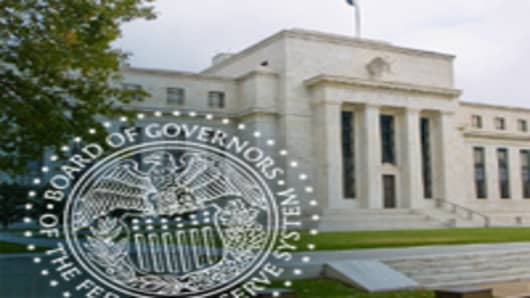The Federal Reserve, citing concerns about the pace of recovery, held its key interest rate near zero and indicated the economy would have to improve substantially for any changes in policy to take place.
The Fed labeled economic growth as "moderate" and indicated that housing remains at a "depressed" level.
The central bank gave no indications toward any further easing measures would take place, a key consideration as the stock market looks for direction. Stocks have come off their highs following a robust rally that began in October, shortly after the Fed introduced its last easing program.
In the meantime, the balance of the economic data has been somewhat stronger though volatile.
"At the moment we're in a curious position, where the risks seem to be balanced on the upside and the downside with the economy," said Kevin Dunning, global economist and U.S. analyst for the Economist Intelligence Unit. "As unsatisfying as it is, it doesn't need any great monetary tightening or loosening from the Fed."
In all, the Open Market Committee statement offered little change in wording from the previous month.
A 9-1 vote accompanied the statement, which renewed the pledge to keep rates low through 2014. The discount rate remains unchanged at 0.75 percent.
Richmond Fed President Jeffrey Lacker was the sole committee member to vote against the wording.
"The Committee expects economic growth to remain moderate over coming quarters and then to pick up gradually," the FOMC statement said. "Strains in global financial markets continue to pose significant downside risks to the economic outlook."
The stock marketdropped a few points after the release while long-term bond yieldsedged higher.
The Fed statementcomes against a backdrop both of anxiety over the economy and pervasive sentiment that the central bank is unlikely to take any significant easing measures.
With the Operation Twist program coming to an end in June, the Fed is likely to wait for worsening economic conditions before taking action. The Twist is a balance sheet-neutral buying and selling of bonds in an attempt to drive down long-term lending rates.
"The Committee also decided to continue its program to extend the average maturity of its holdings of securities as announced in September," the statement said. "The Committee is maintaining its existing policies of reinvesting principal payments from its holdings of agency debt and agency mortgage-backed securities in agency mortgage-backed securities and of rolling over maturing Treasury securities at auction."
Bernanke has been under some pressure to tip the Fed's hand more as unemployment is improving but still high, and the housing marketremains mired in a climate of dropping prices and middling sales.
The Fed has expanded its balance sheet to nearly $3 trillion through quantitative easing. While QE has coincided with a growth in stock market returns it also has stoked fears of inflation and criticism that the Fed does not have a solid exit strategy to unwind all the debt it has accumulated.
"He's still continuing with QE two-and-a-half. He doesn't want to go into QE3 because then he uses another bullet," said Doug Roberts at Channel Capital Research. "It's almost like he's trying to keep a trading range. Every time people get too buoyant he comes out with a dour review, and every time they get too depressed he says 'the Fed has your back.' "
Yet inflation, at least at the core excluding food and energy costs, remains within the Fed's target of 2 percent. Surging gasoline prices, past $4 a gallon at the pump, as well as persistently high grocery costs have nullified much of the case that inflation is tame.
Bernanke, though, has expressed far more concern about the jobless rate, which sits at 8.2 percent. He has said repeatedly he does not expect job creation to accelerate anytime soon.
"He'd rather be known as the Fed chairman responsible for 3 percent inflation than 20 percent unemployment," Roberts said.
The chairman follows the release of the Fed decision with a news conference, during which investors will try to parse his words for clues about future actions.
We expect he will sound cautiously optimistic on the better near-term outlook, but also concerned about the risks to the outlook from a variety of shocks, including Europe, oil prices, and the fiscal cliff," Bank of America Merrill Lynch economists said in a note.
"As a result, we expect Bernanke to keep the Fed’s options open, acknowledging that there is no urgency for further easing now, but keeping additional asset purchases as a possibility should activity falter later this year," they added. "If asked, we expect him to downplay the possibility of extending Twist and sterilized QE."
The Bernanke Q-and-A will begin at 2:15 pm.




